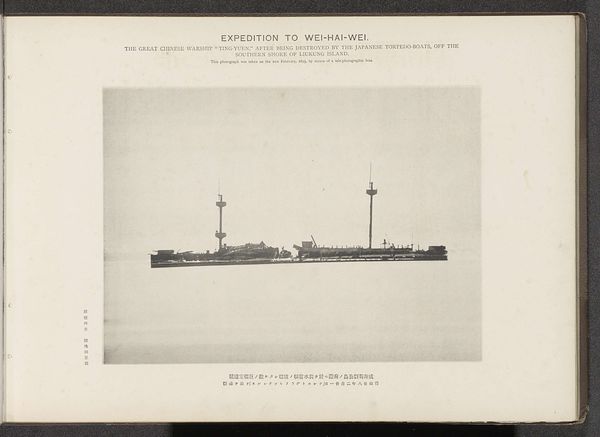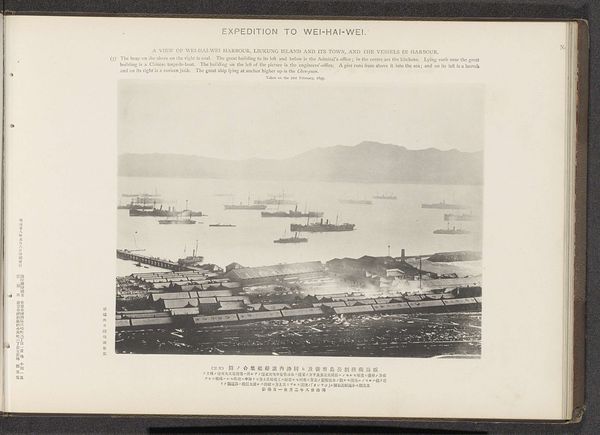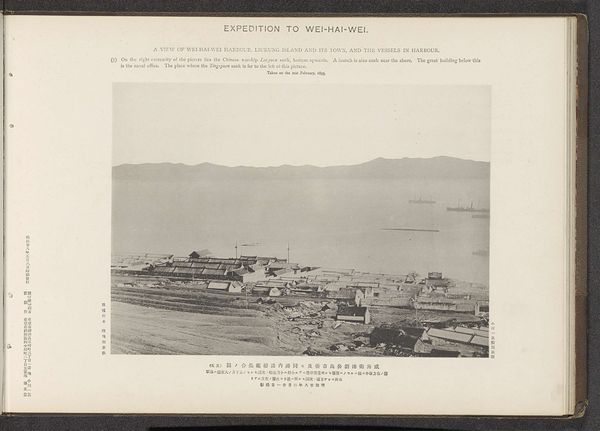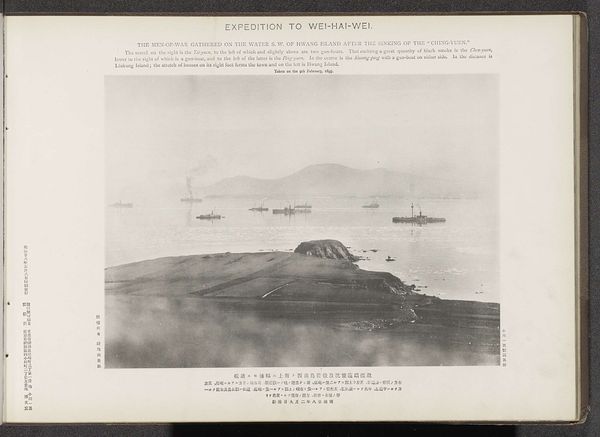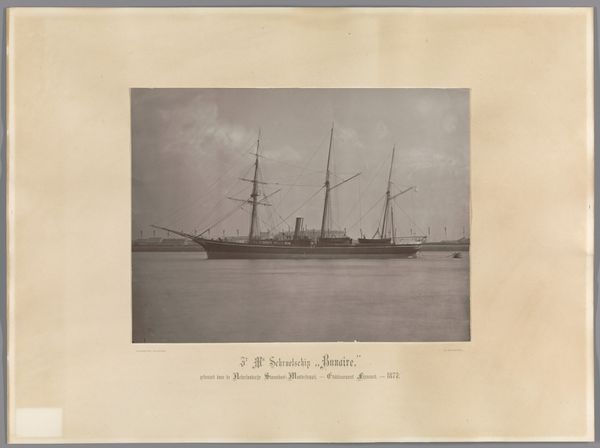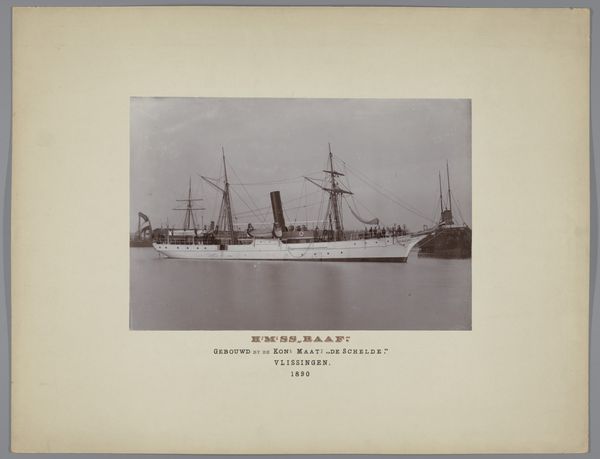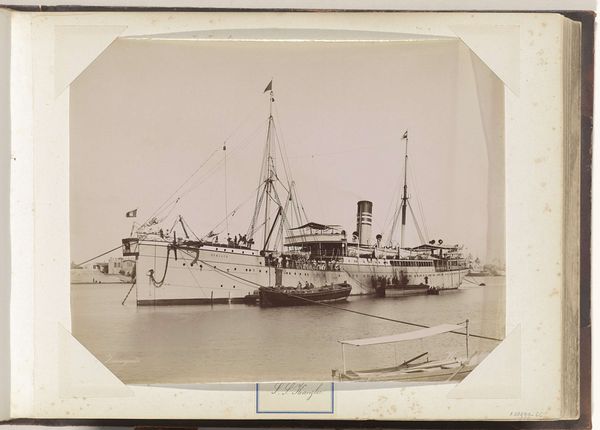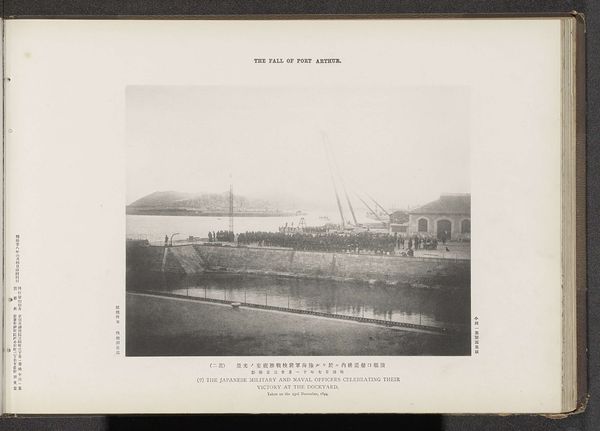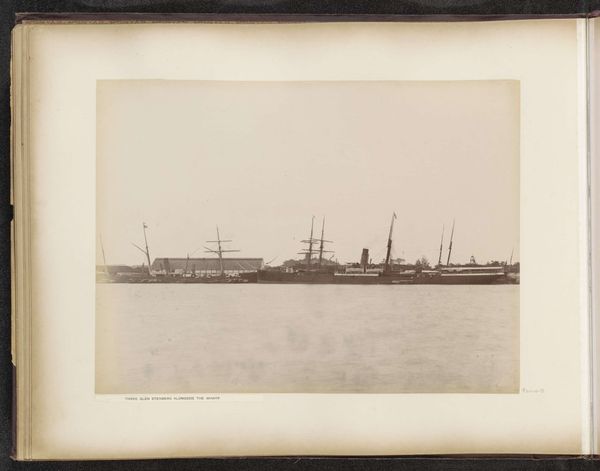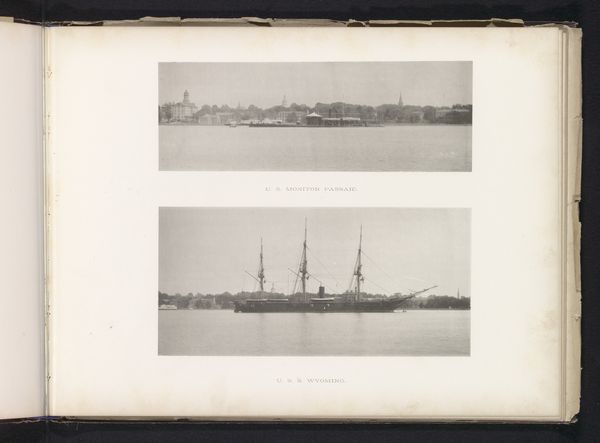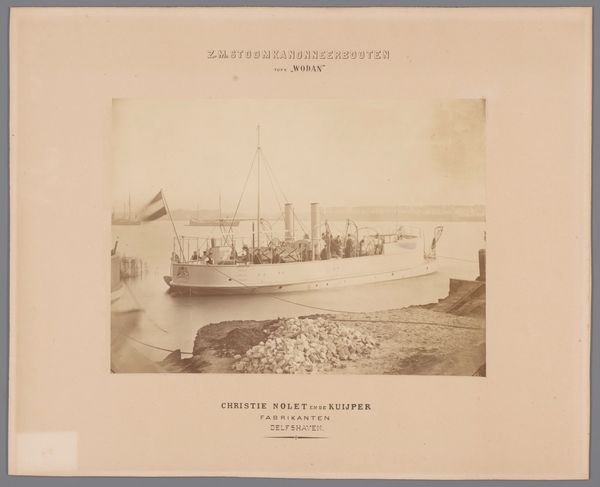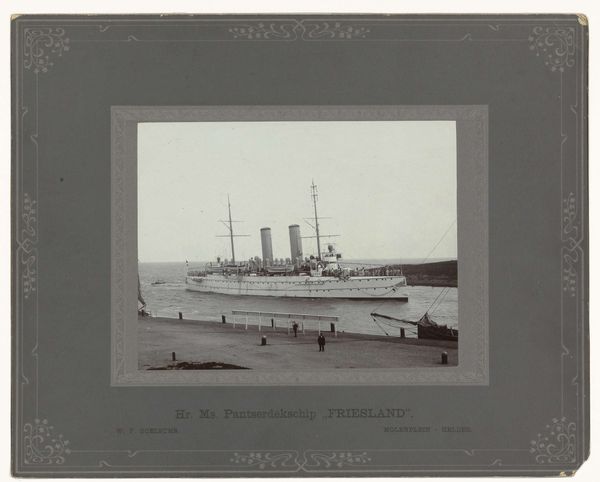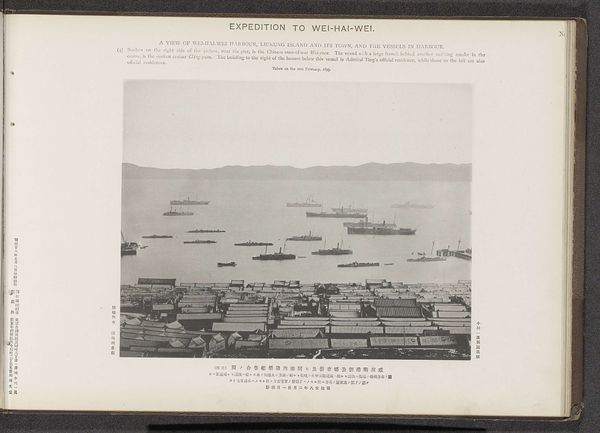
print, photography
# print
#
asian-art
#
photography
#
orientalism
#
cityscape
#
realism
Dimensions: height 193 mm, width 286 mm
Copyright: Rijks Museum: Open Domain
Curator: The stark stillness here is striking. Looking at this print, entitled "The 'Matsushima' bringing in captured Chinese warships," made around 1895, you feel the weight of both technological advancement and imperial ambition. The Ordnance Survey Office, as it was known, captures a particular moment of military dominance with this shot. Editor: My initial reaction is one of subdued tension. Despite being a scene of victory, there's a muted quality to the monochrome, which suggests a darker symbolism at play beyond mere triumph. The cityscape in the background provides a somber landscape. Curator: The socio-political context here is critical. This image would have been consumed within a society rapidly industrializing and flexing its military strength on an international scale. It’s interesting to consider the public perception versus the reality of those wars. This image serves as both a document of the time and propaganda. Editor: The Matsushima, a visual representation of Japanese power, contrasts sharply with the implied helplessness of the captured vessels. The small boats clustered around it, filled with men, remind us of individual lives within the grand theater of war, which perhaps hints at a larger narrative about collective sacrifice for power. It is impossible for this viewer to ignore the cost and the lives altered during wartime. Curator: Absolutely. And the "Orientalism" style, as it's been tagged, would also affect the presentation of the victory in that war. Images such as these contributed to shaping global perceptions and consolidating political narratives at the time. Its dissemination further emphasized Japan's naval strength during that era. Editor: The very stillness you mentioned—the almost unnerving quiet of the water and sky—enhances the print's emblematic nature. The warships are powerful symbols. The photograph almost seems like a visual elegy instead of just a victory celebration. Curator: Agreed. Viewing this, understanding the period's social values, the global struggles, and institutional influences at the time opens layers of perception and historical debate for those who contemplate it. Editor: Thinking about these interwoven levels makes you consider the true stories buried within the representation of that war.
Comments
No comments
Be the first to comment and join the conversation on the ultimate creative platform.
